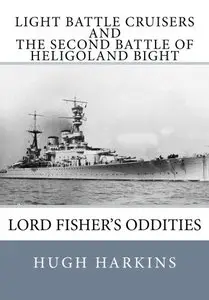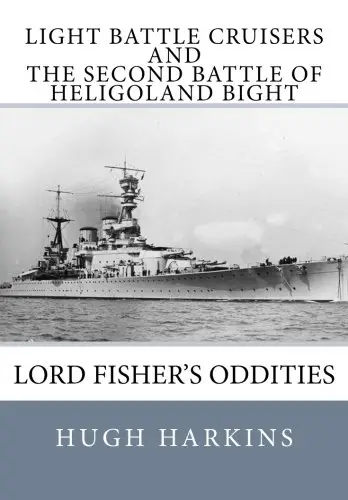Light Battle Cruisers and The Second Battle of Heligoland Bight: Lord Fisher's Oddities by Hugh Harkins
English | Feb 19, 2015 | ISBN: 1903630525 | 72 Pages | EPUB/MOBI/AZW3/PDF (Converted) | 5 MB
English | Feb 19, 2015 | ISBN: 1903630525 | 72 Pages | EPUB/MOBI/AZW3/PDF (Converted) | 5 MB
The naval engagement often referred to as the ‘Second Battle of Heligoland Bight’, fought on 17 November 1917, between elements of the British Grand Fleet and elements of the German High Seas Fleet, is often sidelined from history. While not being the major clash of fleets like the ‘Battle of Jutland’ the previous year, or a decisive victory for one side or the other as was the case with the ‘Battle of Heligoland Bight’ in August 1914, or indeed the battles of ‘Coronel’ and the ‘Falkland Islands’ in November and December 1914 respectively, it is significant in being the last naval battle of the war in which capital ships of the opposing British Grand Fleet and the German High Seas Fleet were engaged. Perhaps of more significance, this was the only time that Lord Fisher’s controversial ‘oddities’, the Light Battle Cruisers of the Renown and Courageous Classes engaged enemy warships in battle during the war. Never, perhaps, in the annals of naval history has there been more controversial Classes of vessels, particularly with the Courageous Class and the unique HMS Furious. Often referred to as Battle Cruisers, Lord Fisher, and the Admiralty, referred to them as Light Battle Cruisers, while the Courageous Class became known as Large Light Cruisers, an epitaph attacked after the war, while the Renown Class were simply referred to as Battlecruisers, and the Furious was completed as a quasi-aircraft carrier. In his own writings Lord Fisher stated that he was considered “senile and autocratic” for pushing ahead with the Light Battle Cruisers, or “Monstrous Cruisers” as they had been labelled in some areas of Parliament. This volume sets out to describe the Light Battle Cruisers genesis and briefly outline their development and fielding in the years immediately before the action of 17 November 1917. Chapter 3 details the Second Battle of Heligoland Bight from both the German and British viewpoints, drawing on references from operational documents to support the fact that the oft-stated engagement between HMS Repulse and two German Dreadnought Battleships did not actually take place, dispelling the myth that such an engagement took place during the battle; a myth that has endured for almost 100 years.



